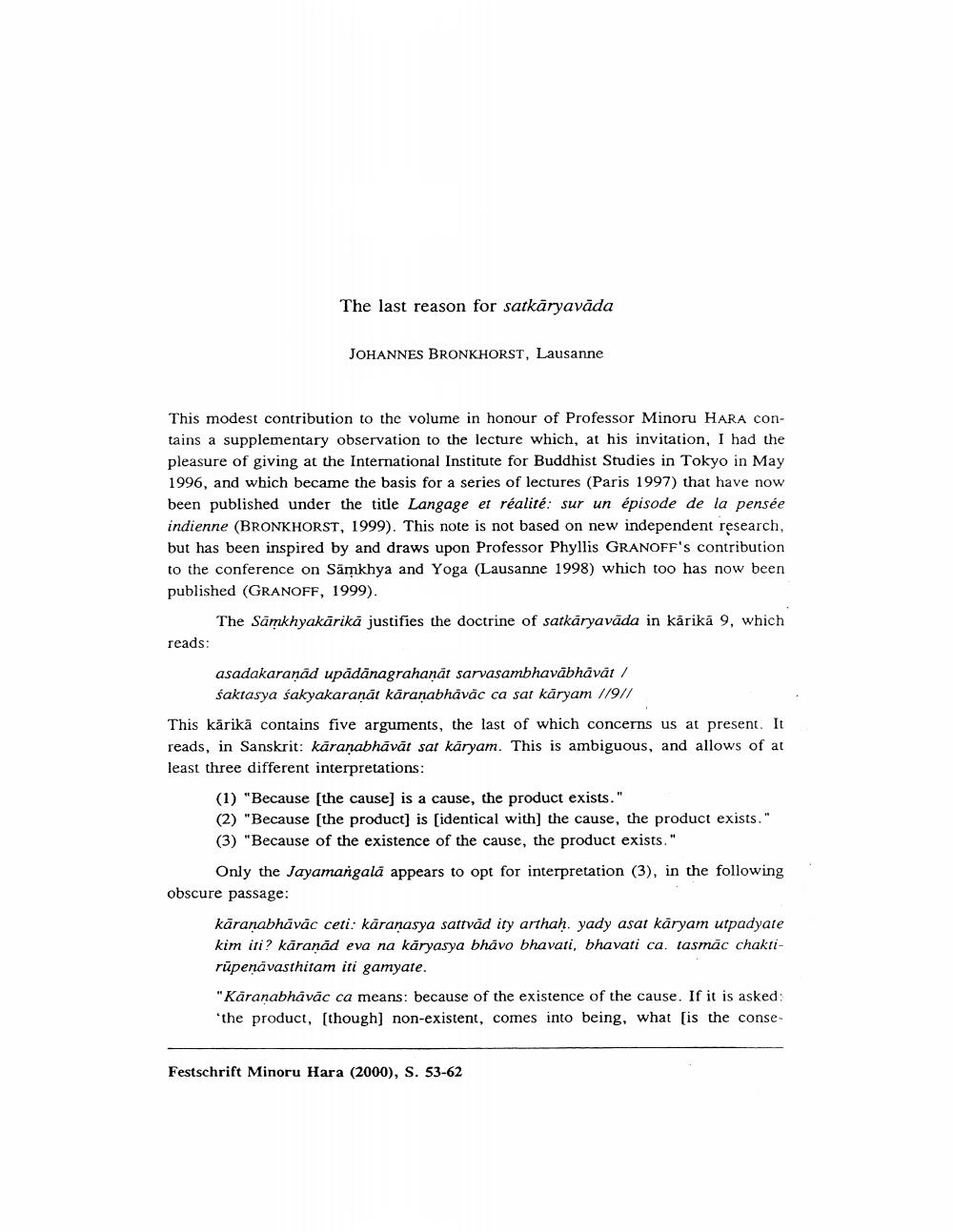Book Title: Last Reason For Satkaryavada Author(s): Johannes Bronkhorst Publisher: Johannes Bronkhorst View full book textPage 1
________________ The last reason for satkāryavāda JOHANNES BRONKHORST, Lausanne This modest contribution to the volume in honour of Professor Minoru HARA contains a supplementary observation to the lecture which, at his invitation, I had the pleasure of giving at the International Institute for Buddhist Studies in Tokyo in May 1996, and which became the basis for a series of lectures (Paris 1997) that have now been published under the title Langage et réalité: sur un épisode de la pensée indienne (BRONKHORST, 1999). This note is not based on new independent research, but has been inspired by and draws upon Professor Phyllis GRANOFF's contribution to the conference on Samkhya and Yoga (Lausanne 1998) which too has now been published (GRANOFF, 1999). The Samkhyakārikā justifies the doctrine of satkāryavāda in kārikā 9, which reads: asadakaranad upädänagrahanät sarvasambhavābhāvāt / Śaktasya sakyakaranát karanabhäväc ca sat käryam /19/1 This kärikä contains five arguments, the last of which concerns us at present. It reads, in Sanskrit: karanabhāvāt sat kāryam. This is ambiguous, and allows of at least three different interpretations: (1) "Because the cause] is a cause, the product exists." (2) "Because the product) is [identical with] the cause, the product exists." (3) "Because of the existence of the cause, the product exists." Only the Jayamangalā appears to opt for interpretation (3), in the following obscure passage: kāranabhāvāc ceti: karanasya sattvād ity arthah. yady asat käryam utpadyate kim iti? karanád eva na käryasya bhavo bhavati, bhavati ca. tasmac chaktirūpenavasthitam iti gamyate. "Karanabhāvāc ca means: because of the existence of the cause. If it is asked: the product, (though] non-existent, comes into being, what is the conse Festschrift Minoru Hara (2000), S. 53-62Page Navigation
1 2 3 4 5 6 7 8 9 10
